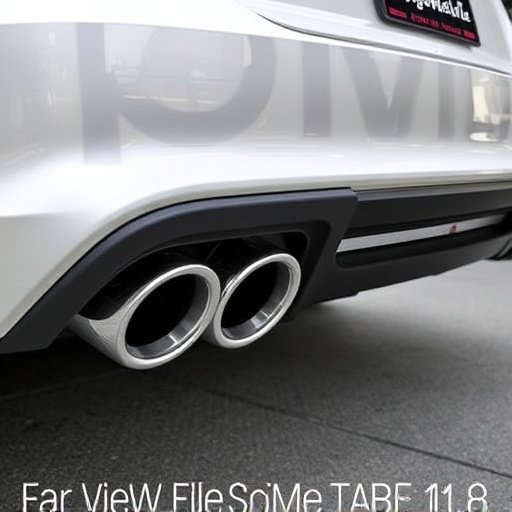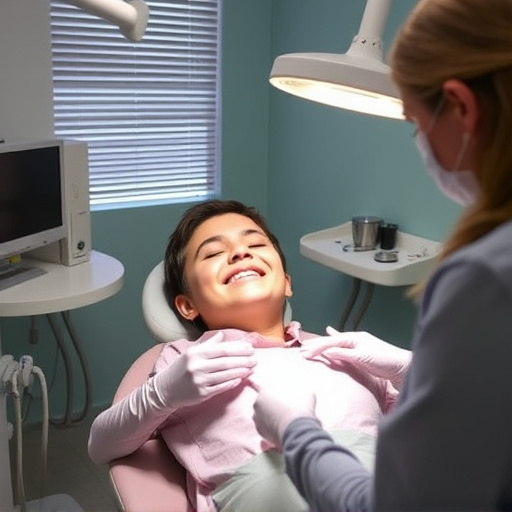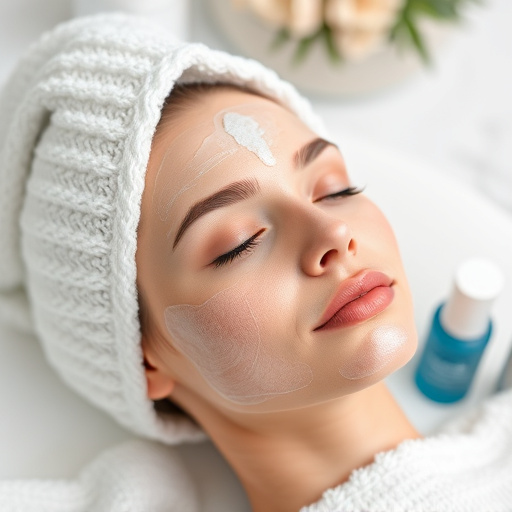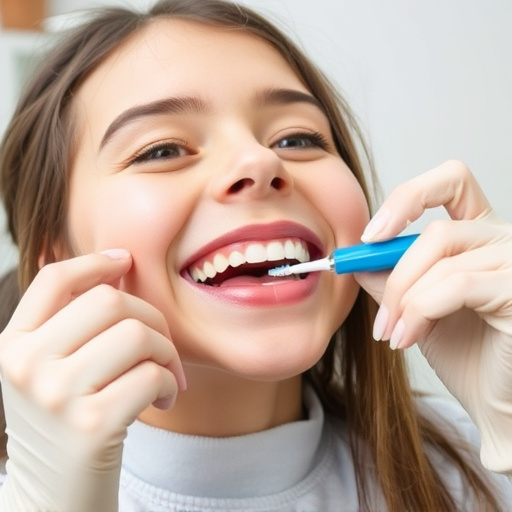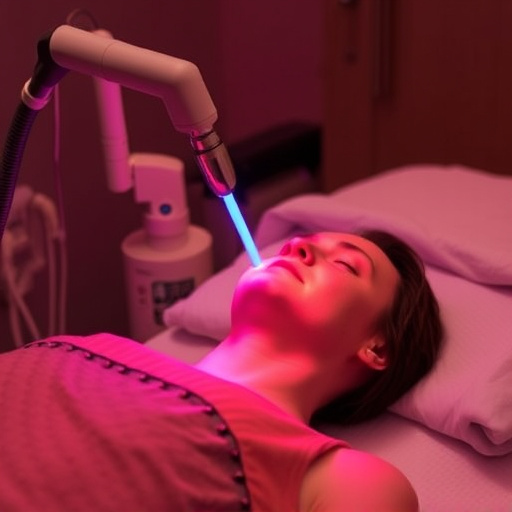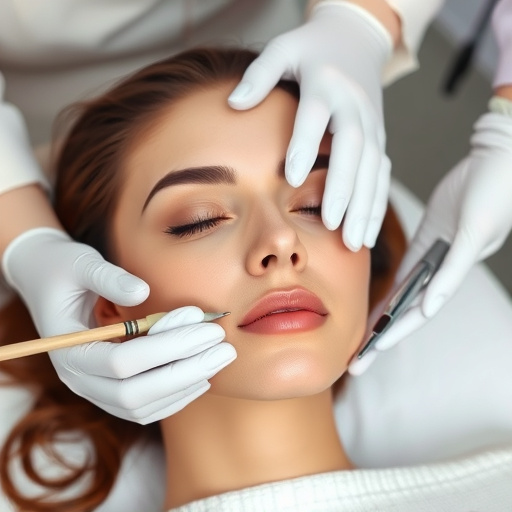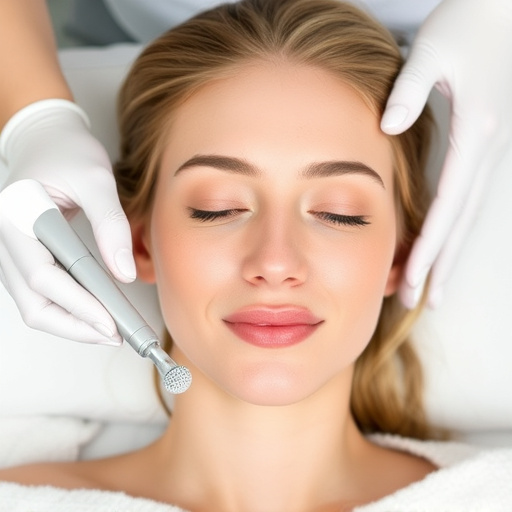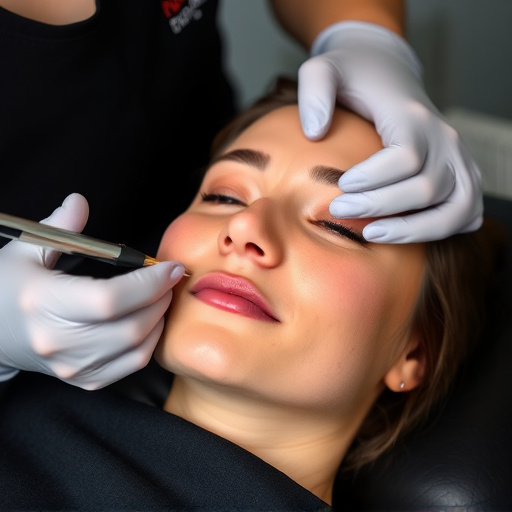Cystic acne, a painful and scarring condition, is caused by excess sebum and clogged pores. OTC treatments like benzoyl peroxide or salicylic acid offer accessible options, but their effectiveness varies. Non-surgical methods such as microneedling paired with topical strategies show promise, emphasizing the need for consistent use and personalized plans with dermatological guidance for optimal results.
Cystic acne, a severe form of acne characterized by painful, large pimples beneath the skin’s surface, can be challenging to manage. While prescription medications are commonly sought, over-the-counter (OTC) options also exist. This article delves into the effectiveness of OTC cystic acne treatments, exploring active ingredients, their mode of action, and considerations for successful management. Understanding both the causes and characteristics of cystic acne is key to selecting the right OTC products for effective relief.
- Understanding Cystic Acne: Causes and Characteristics
- Exploring Over-the-Counter Treatment Options
- Efficacy and Considerations for Successful Management
Understanding Cystic Acne: Causes and Characteristics

Cystic acne is a severe form of acne that goes beyond the typical surface-level breakouts. It’s characterized by deep-seated pimples or cysts, often appearing as painful nodules beneath the skin’s surface. These cysts can be filled with pus and are typically larger than common acne lesions. Understanding its causes is crucial when exploring effective treatments.
The primary driver of cystic acne is a combination of excess sebum production and clogged pores. Sebum, produced by the skin’s sebaceous glands, is naturally oily, serving as a natural moisturizer. However, when these glands produce too much sebum or dead skin cells build up, it creates an ideal environment for bacteria to flourish, leading to inflammation and cystic acne formation. Characteristic traits include redness, swelling, and hard lumps under the skin, often on the face, chest, or back—areas with a high density of oil-producing glands. Effective treatment aims to address these underlying causes while promoting skin rejuvenation and reducing the appearance of scars, sometimes associated with severe forms of acne.
Exploring Over-the-Counter Treatment Options

Many people suffering from cystic acne turn to over-the-counter (OTC) treatments as a first line of defence due to their accessibility and potential cost-effectiveness. OTC cystic acne treatments offer a range of options, from topical creams containing ingredients like benzoyl peroxide or salicylic acid to oral medications that target hormone-related factors contributing to the condition. These treatments can be effective in managing symptoms and preventing further breakouts for many individuals.
While these remedies may not work as intensively as prescription options like isotretinoin, they can still provide significant relief. Additionally, OTC products serve as a good starting point for those who want to avoid the potential side effects of stronger medications or prefer a more gentle approach to skin care. Moreover, some treatments, such as chemical peels or body contouring (when addressing scarring), might be considered for more severe cases, offering a holistic approach to managing cystic acne and its aftermath.
Efficacy and Considerations for Successful Management

The efficacy of over-the-counter cystic acne treatment is a topic of growing interest due to its accessibility and potential cost-effectiveness compared to prescription options. While many OTC products claim to reduce inflammation and unclog pores, their true effectiveness in managing severe cases like cystic acne requires careful consideration. The success often lies in combining various strategies tailored to individual skin needs.
Non-surgical treatments, such as microneedling therapy, have gained attention for their potential to stimulate collagen production and improve skin texture. These methods, alongside targeted topical treatments, can be part of a comprehensive approach to cystic acne management. However, it’s crucial to remember that results may vary; consistent use and patience are key. Additionally, consulting a dermatologist is advisable to ensure the chosen treatment plan aligns with your specific condition for the best chance at successful management.
While over-the-counter (OTC) cystic acne treatments offer accessible solutions, their efficacy varies. For mild cases, OTC options can provide relief, but severe cystic acne may require prescription medications for optimal management. Combining topical treatments with good skincare habits and regular check-ins with a dermatologist is key to successfully managing cystic acne and achieving clear, healthy skin.


